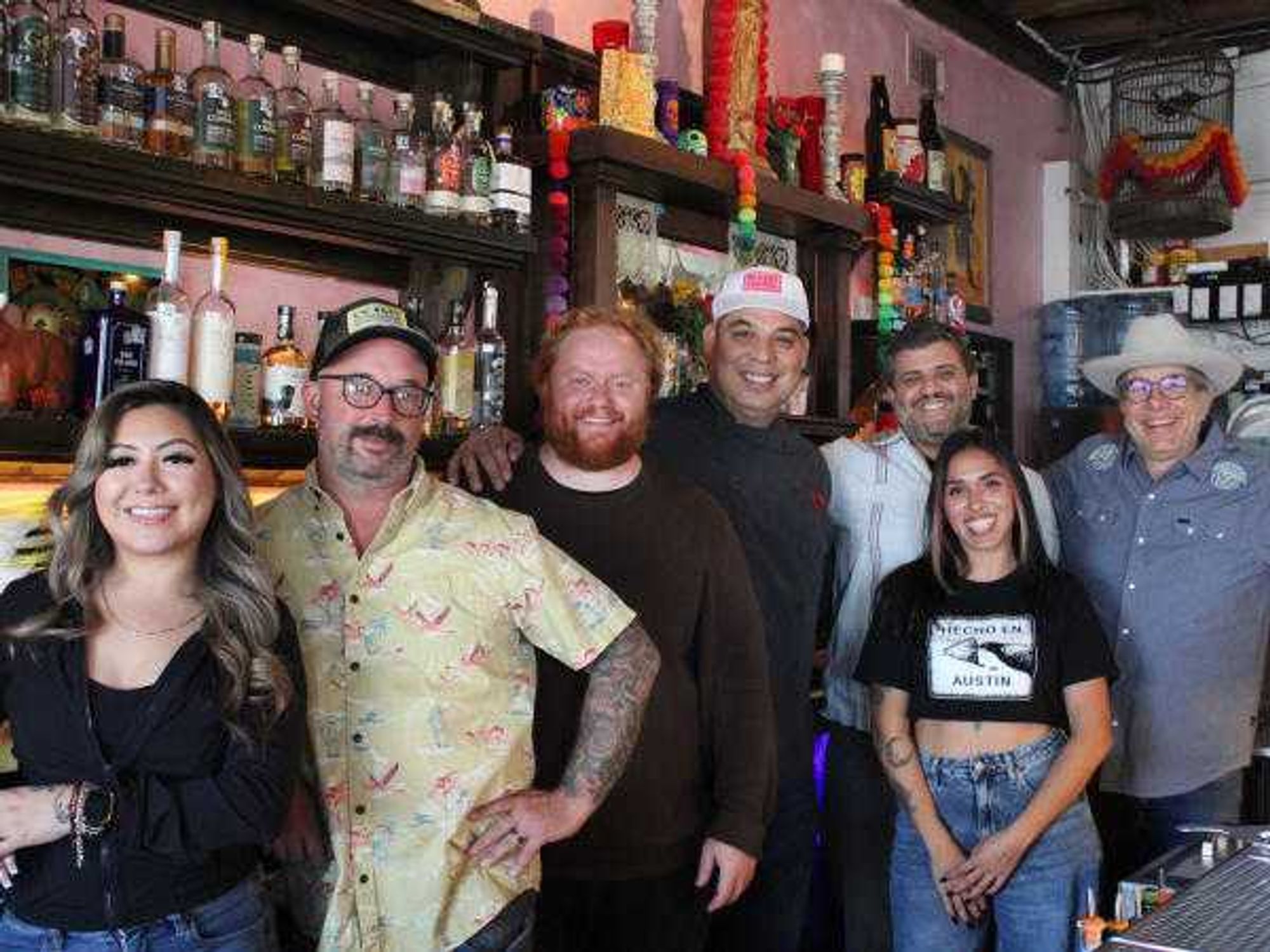 Austin State Cemetery founded in 1861.Photo by Katherine Squier
Austin State Cemetery founded in 1861.Photo by Katherine Squier 11 acre cemetery nestled in a north Austin neighborhood.Photo by Katherine Squier
11 acre cemetery nestled in a north Austin neighborhood.Photo by Katherine Squier Austin State Cemetery founded in 1861.Photo by Katherine Squier
Austin State Cemetery founded in 1861.Photo by Katherine Squier Over time, the details of the landscaping aesthetics and burial bookkeepingbegan to be overlooked.Photo by Katherine Squier
Over time, the details of the landscaping aesthetics and burial bookkeepingbegan to be overlooked.Photo by Katherine Squier
There is an 11 acre cemetery nestled in a north Austin neighborhood between kitschy boutiques, a funky coffee shop and an intramural baseball field. It lacks the eerie beauty of most graveyards. With a few dull trees and a handful of upright headstones, it radiates a feeling of the forgotten.
It is the Austin State Hospital cemetery, and though it seems sparsely populated, there are approximately 2,900 unclaimed or ill-afforded, mentally-disabled and mentally-ill citizens buried under the dry, brown grass.
Founded in 1861, ASH (originally called The Texas State Lunatic Asylum) was the first psychiatric institute west of the Mississippi. The hospital has significantly downsized over the years; where it once housed 3,000 patients at the height of enrollment, it now houses around 300.
Patients of ASH, as well as residents of the Austin State School for the mentally disabled have been laid to rest here for over 100 years. Those who are buried in the cemetery were either wards of the state, had no family, had no financial solubility, or a combination thereof. Over time, the details of the landscaping aesthetics and burial bookkeeping began to be overlooked.
When asked how often a friend or family member of the deceased requests to visit the grave of a loved one, Williamson said, “Sadly, not ever.”
Joe Williamson and Richard Reneau are presently in charge of the grounds and maintenance crew for ASH, which includes the cemetery. In 1994, Williamson along with his then co-worker Dave Rupe, took on a project that would bring dignity and respect to the forgotten.
“I can remember back in the early 1970s people would say, ‘Oh we’ve got to dig another grave, it’s just another patient,’ they didn’t really put a lot of love into it,” recalls Williamson. Many of the graves had no markers of any kind, and all of the 11 acres were surrounded by a weak fence that invited trespassers, spurring rumors of satanic rituals. Realistically, teenagers would use the shadowy area as an out-of-sight place to drink alcohol, but none of the activities were particularly eulogizing of the dead.
Williamson, Rupe and Reneau drew up a new land lay out, organized aerial photographs to be taken to survey the grave placements, and they went through 24 volumes of hand written records listing every patient that was buried in ASH cemetery, starting from the first known burial in 1884, in order to mark each grave and computerize the data.
Reneau explains that psychiatric care back then was not what it is today. “In the early 1900s, people weren’t sent here to get fixed,” says Reneau. Thus explaining why all of their records were sparse and reflected of the lack of mental health diagnosis and treatment.
Upon reviewing a patient’s file who was at ASH in the late 19th century, it was common to see no more than one sentence regarding their condition. These records would also list the cause of admittance including, ‘religion,’ ‘disappointed bride,' ‘deranged menstruation,' and ‘disappointment in love.’
The medical knowledge progressed over the years and ASH became a teaching hospital, eventually headed by Dr. Coleman de Chenar. Dr. Chenar performed the autopsy on the 1966 University of Texas sniper, Charles Whitman. By teaching through autopsy, Dr. Chenar often disposed of the used body parts by having them buried in the south west quadrant of the ASH cemetery. This practice continued until Waller Creek flooded a few decades ago, causing the various limbs to unearth and wash onto 51st St. ASH invested in an incinerator soon after that incident, and the cemetery returned to putting people to rest, not just their parts.
Williamson, his crew, and ASH have tirelessly worked to uncover the history of the graveyard and restore dignity to the patients that are buried there. Every patient now receives a funeral service, a casket, and a headstone. Parts of the fence are still in disrepair, but a beautiful new front gate was hand-welded and donated by Chuck McCarthy Jr., a previous patient of the hospital.
Many of the renovations stopped when the recession hit, explains Reneau. Plans to finish repairing the fence were abandoned, and the grass will never be green until they can afford the $20,000 meter that would provide water to the grounds. But for a few men, and over a century of history to wade through, they are doing what they can.
When asked how often a friend or family member of the deceased requests to visit the grave of a loved one, Williamson said, “Sadly, not ever.” But that doesn’t stop him from continuing the effort to make it a respectable place, “This cemetery has got a lot of history, I always take a lot of pride in working in it. It’s for the patients, and they have a nice private resting place, they deserve that much.”
To learn more about volunteering or donation opportunities at ASH, visit their website.

 Beet and citru salad at Moderna. Photo by Brianna Caleri
Beet and citru salad at Moderna. Photo by Brianna Caleri